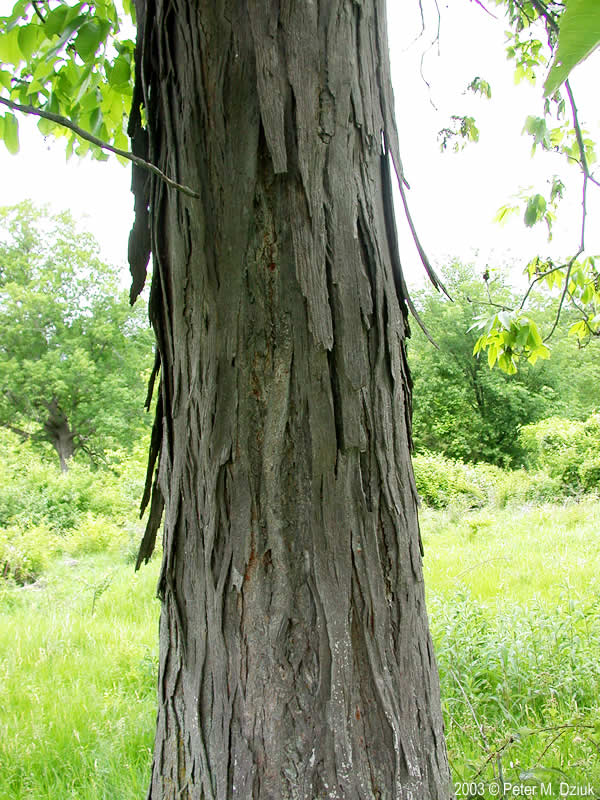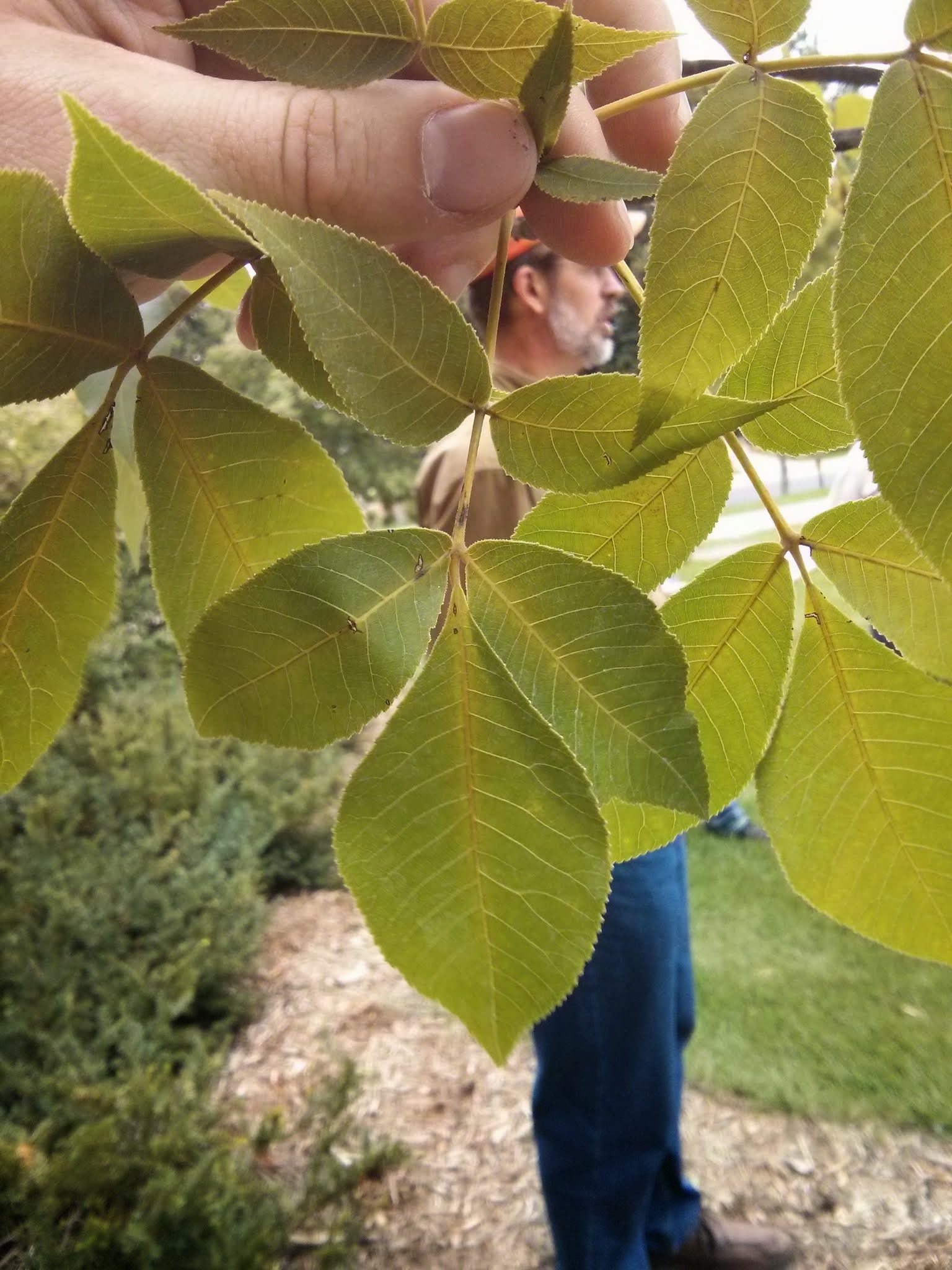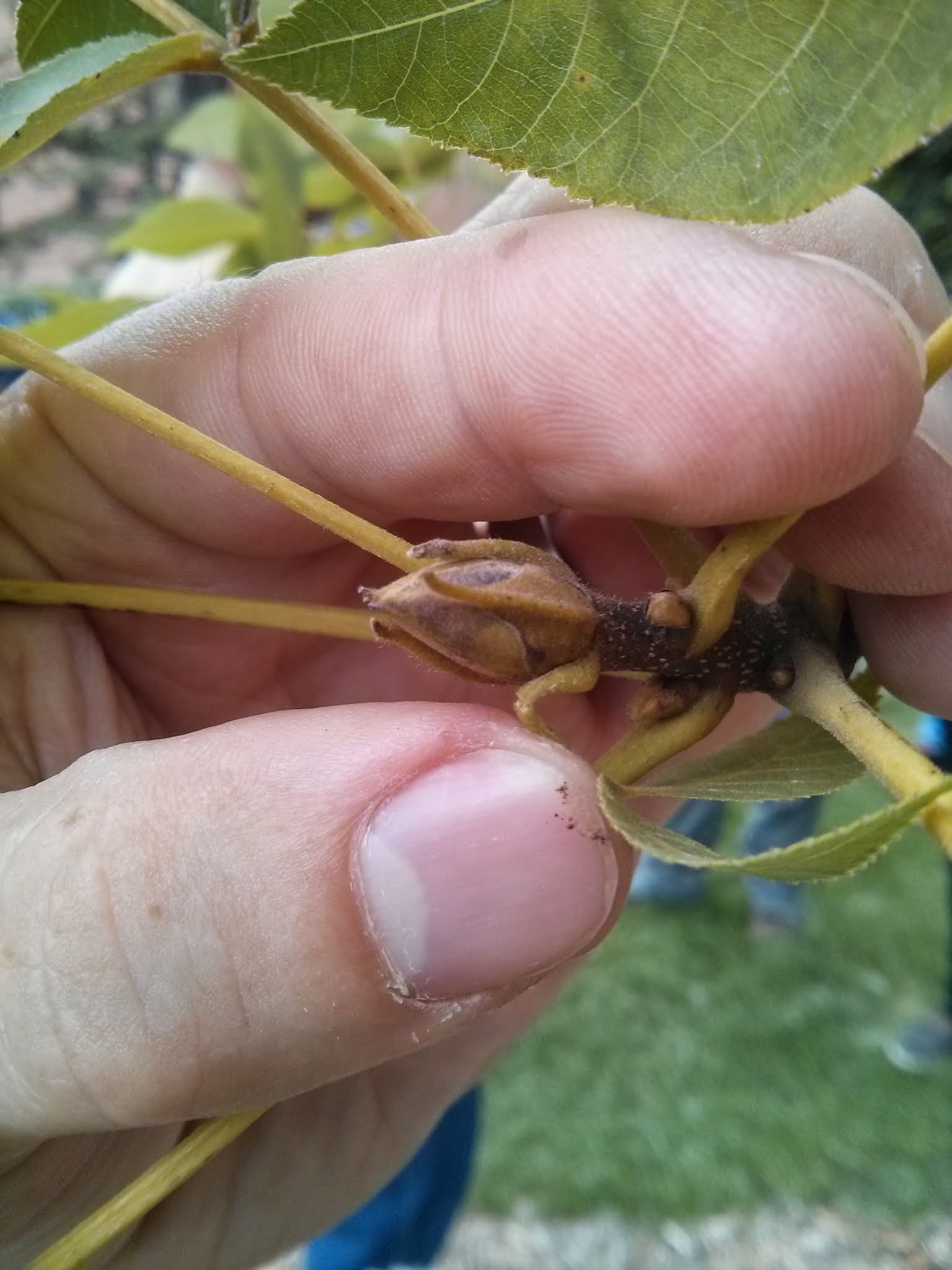Common Name: shagbark hickory
Scientific Name:
Family: Juglandaceae
Genus: Carya
Species: C. ovata
Hardiness Zone: 4 to 8
Height: 70 to 90 ft
Width: 50 to 70 ft
Common characteristics:
Shagbark hickory is a large tree with an irregular, round-topped crown and a heavily divided trunk. The bark is rougher than that of other hickories. Its name comes from its mature bark that is shaggy, light gray, and separating into thick, vertical strips that are only slightly attached to the tree. Young bark and twigs are smooth. Leaves of this tree grow alternately on the stem and are 8" to 15" in length. They are pinnately compound with 5 to 7 leaflets, with finely serrate margins. The fruit of shagbark hickory is a nut that is oval in shape and has an outer husk that splits into four sections when ripe, opening to show the single, white, thin-shelled nut whose sweet kernel is edible.
Where it grows:
Prefers moist, well-drained soils but can tolerate alkaline solid and dry sites as well as the occasional flooding or drought. Intolerant to salts.
How it’s used:
Best used as a shade tree in parks or lawns. This tree needs a very large space to grow. It is difficult to transplant because of its deep taproot. Cross-pollination generally produces a more abundant crop of better-quality nuts.
Ecosystem services:
Many birds and animals will utilize the seed crop of the shagbark hickory.
Where it is native to:
Native to the central and eastern Uniteed States. The northernmost part of its native range is the southeastern corner of Minnesota but it can be planted farther north.
Problems:
No serious problems with pests or disease. Tolerant of black walnut toxicity.
References:


